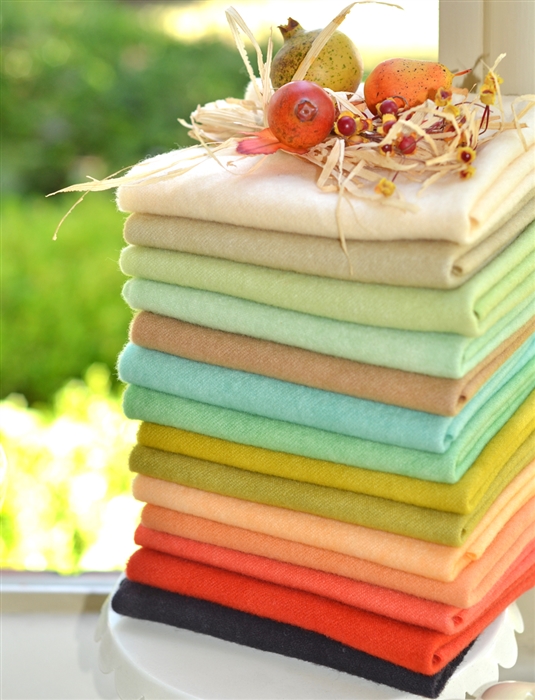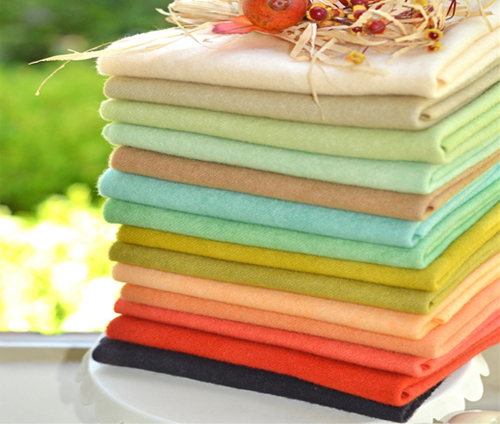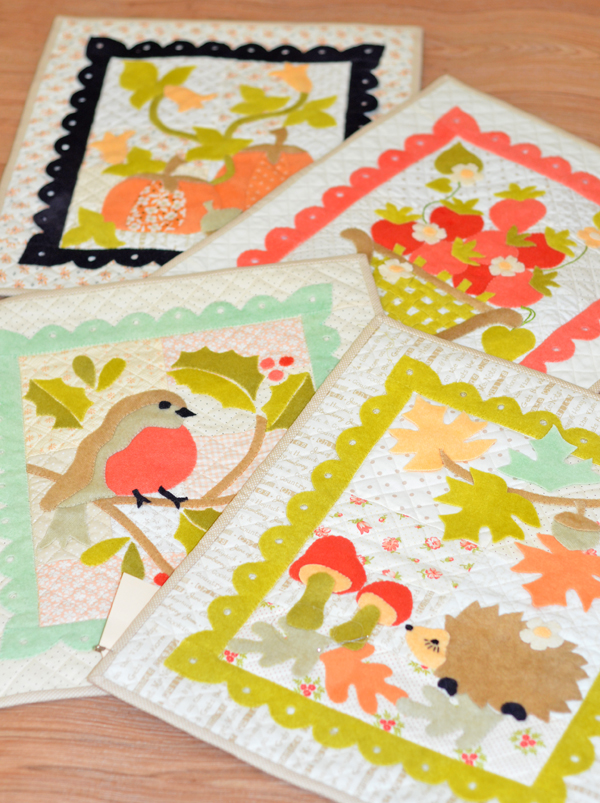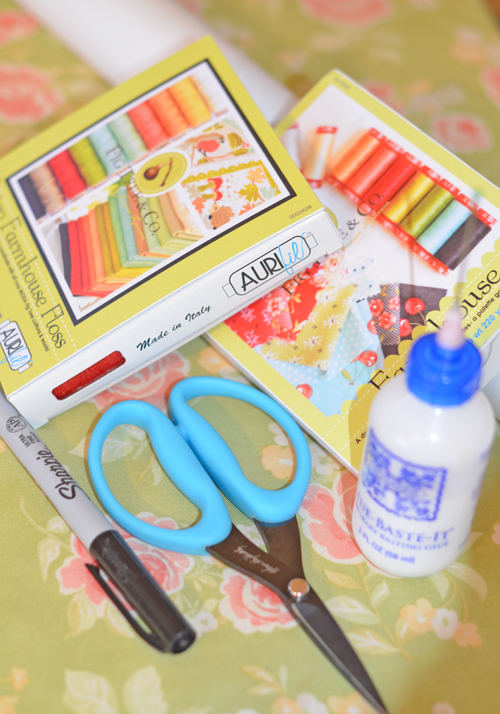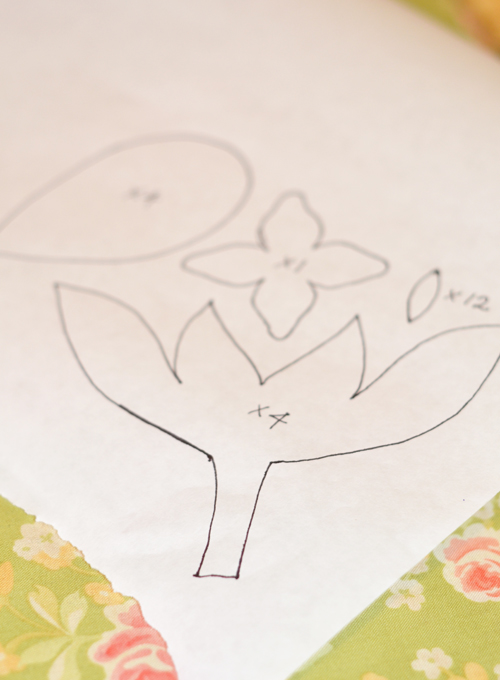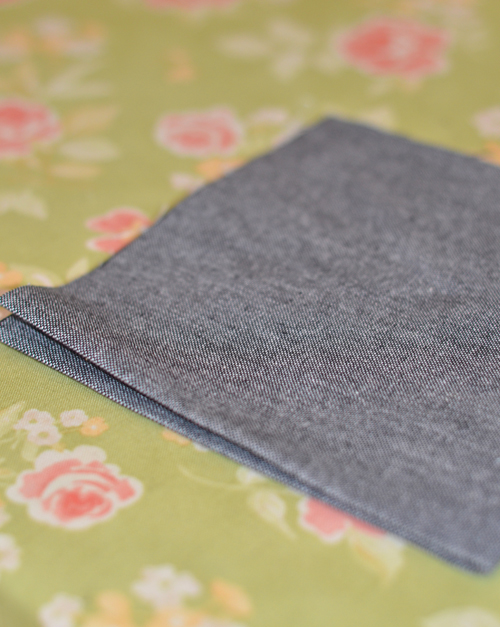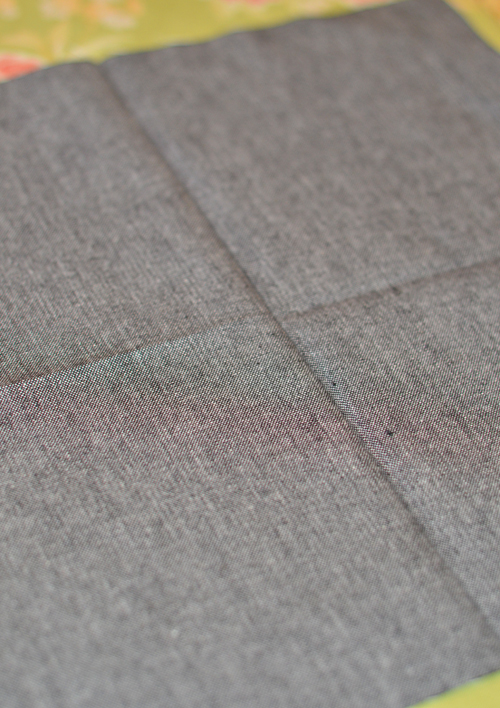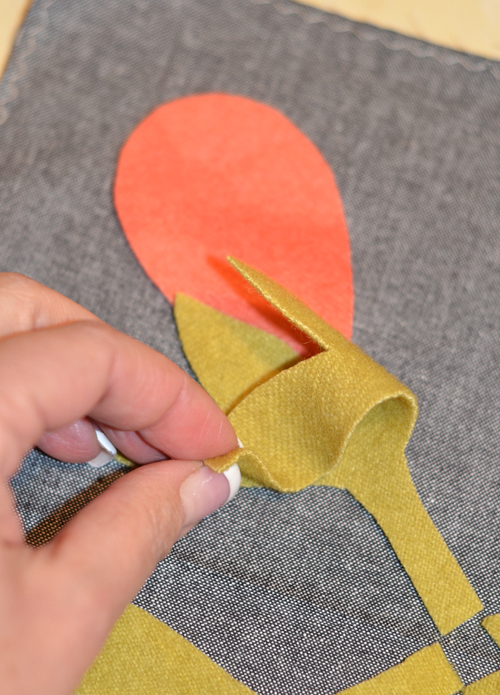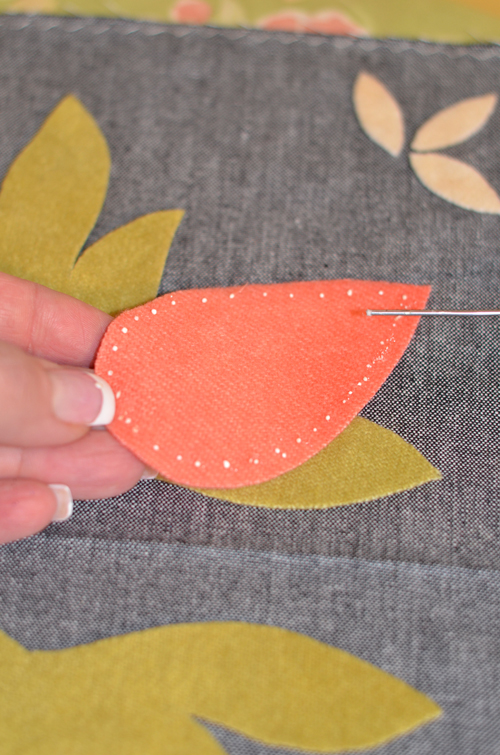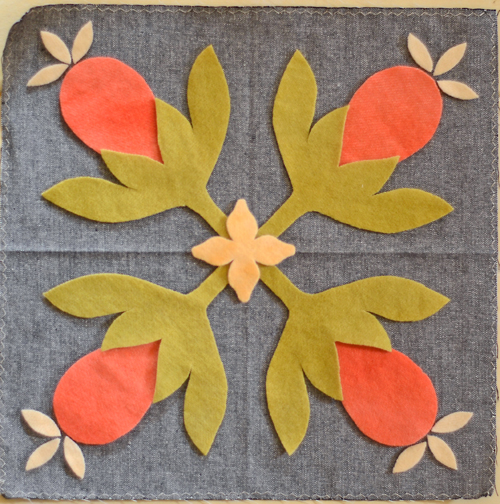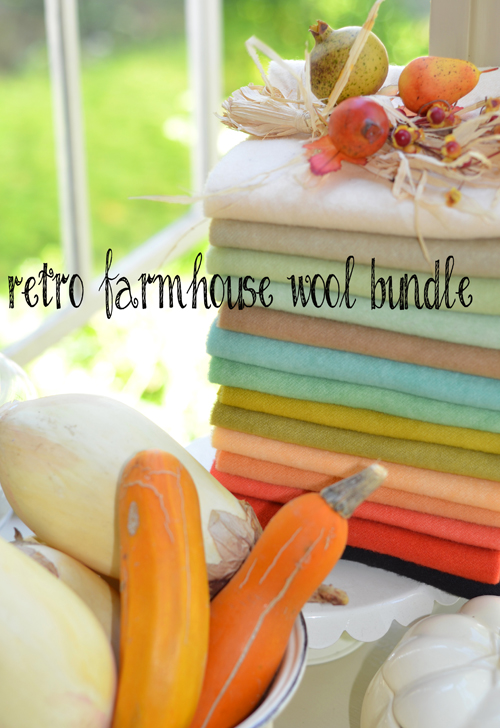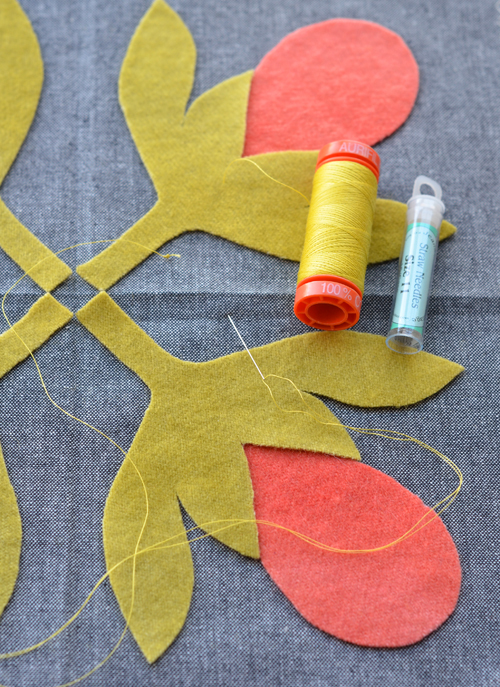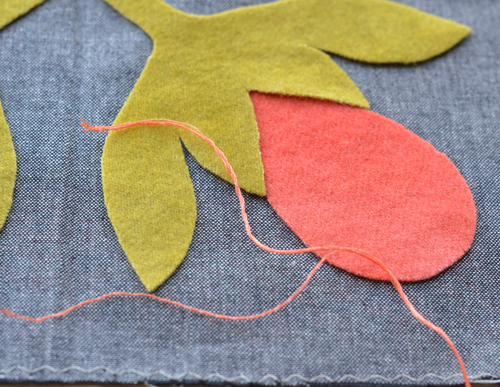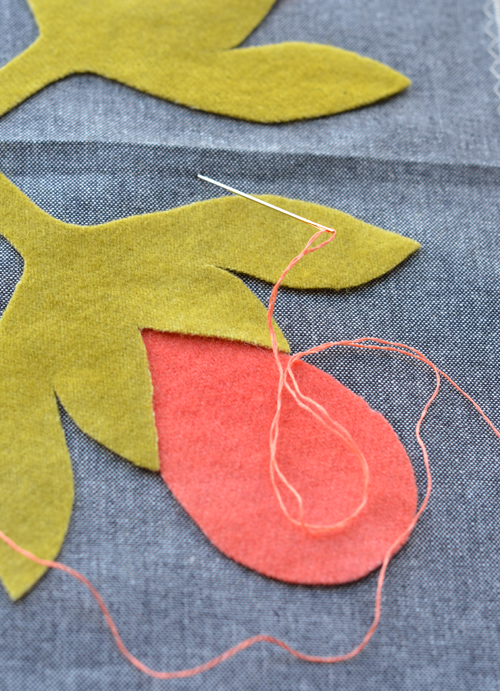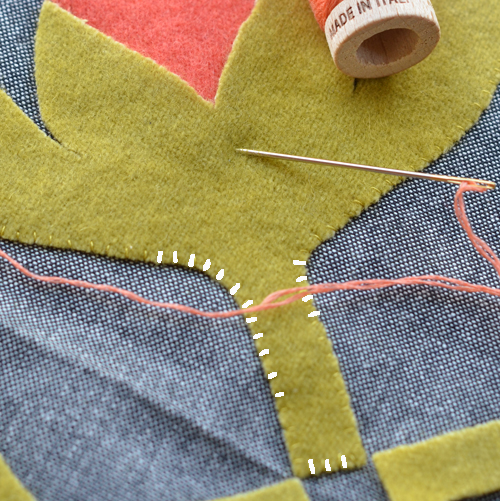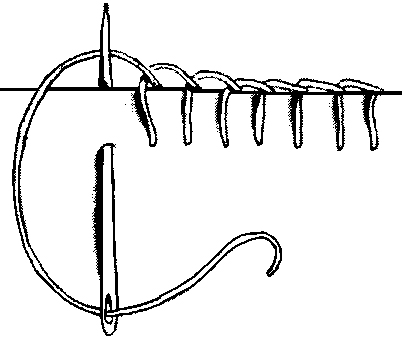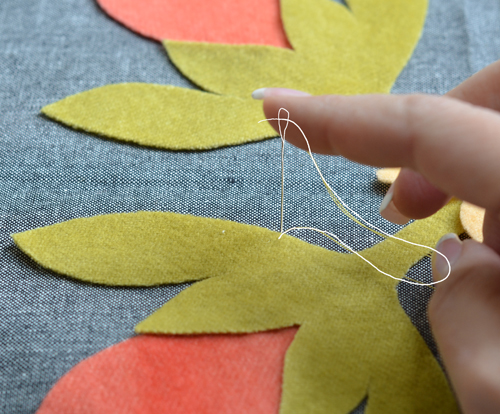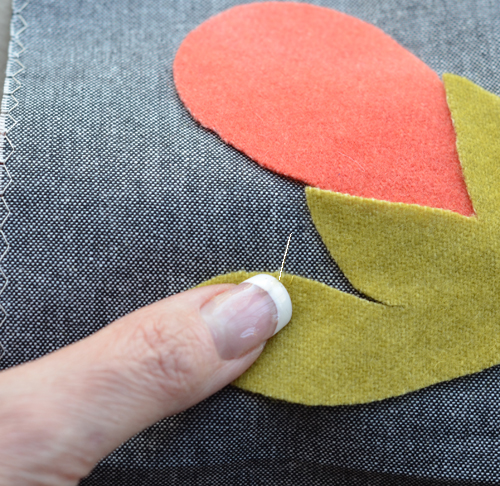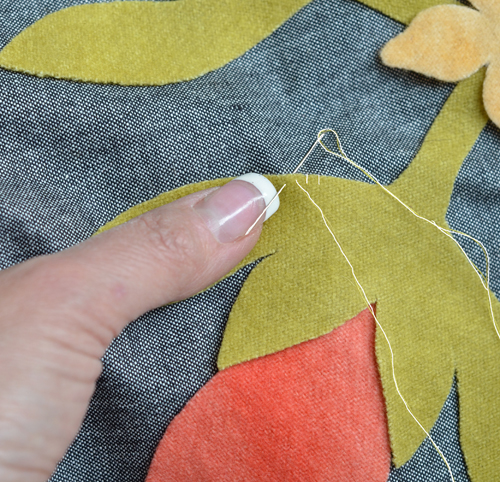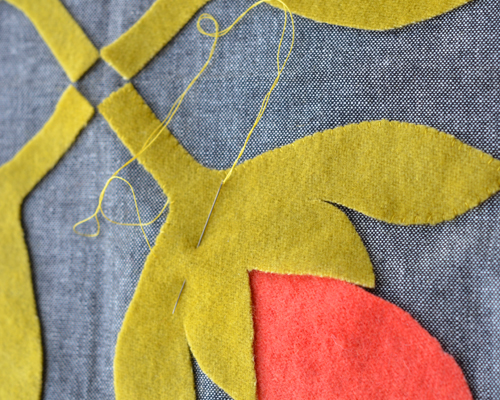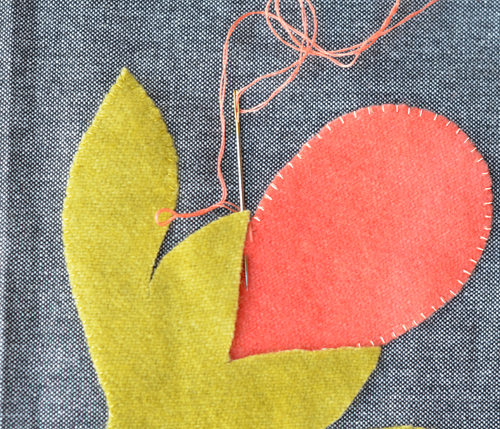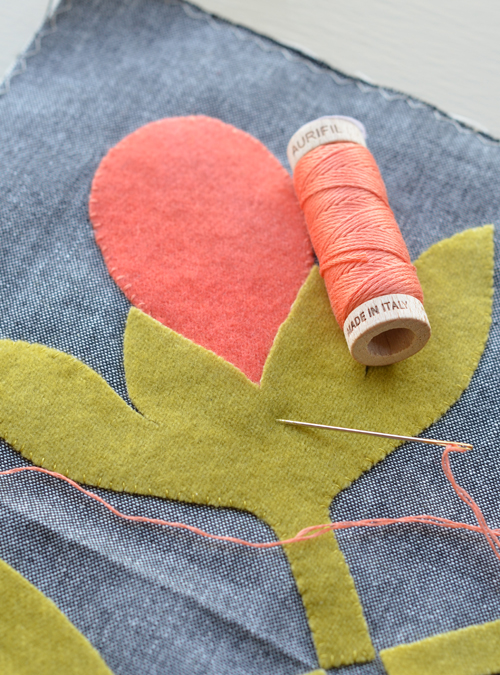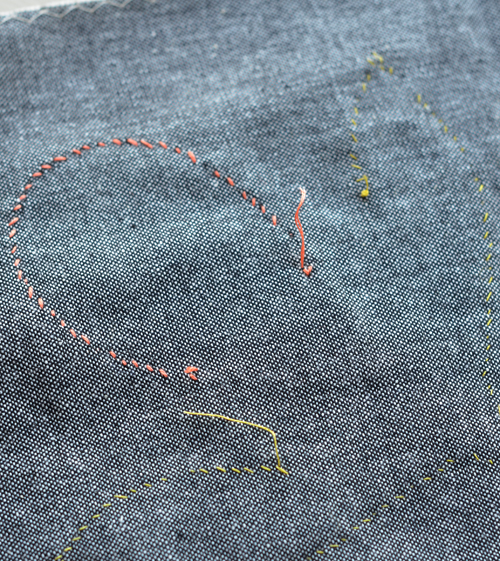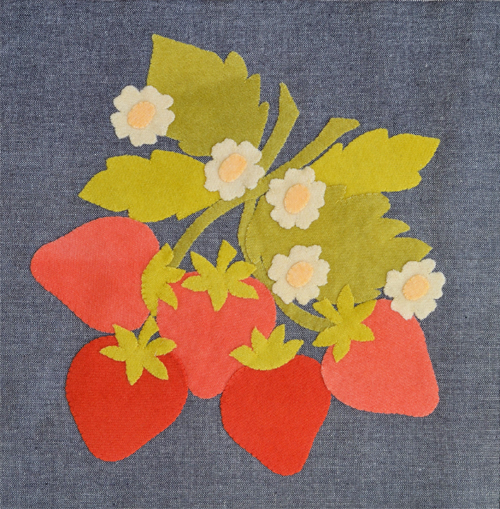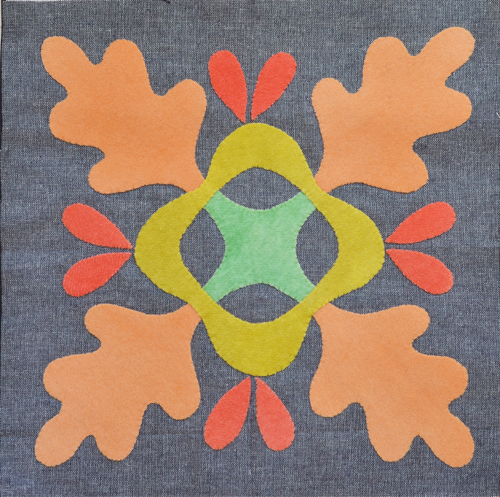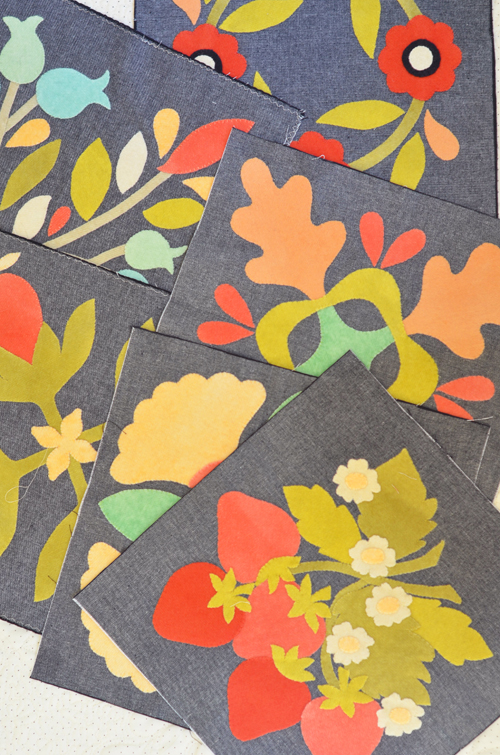WOOL TUTORIAL I
Hello my wool friends!
For those of you who are participating in our RETRO FARMHOUSE WOOL BOM or our WOOL & PATTERN ONLY BOM, as promised welcome to the first of several tutorials on wool throughout this year’s program. Your instructions are on their way to you and will have a lot of this information written out for you in written format but I know that many of you are visual learners so you want to see exactly what I do and how I do it via pictures.
For those of you who are just here to learn about how to work with wool… welcome! If you are interested in getting some yummy wool, we have our new bundle available in full and half size bundles and we have a few super cute FIGS & WOOLIES mini patterns for you to choose from to get yourself started.
Step 1: Gather the materials you will need. To get started you will want the following:
- Good wool. There are many wools out there in the market and many more ways to get some yourself. Here are my tips: I love Weeks Dye Works Wools. This is not because I am not partnering with them to create our lovely bundles of Fig Tree Wools in our color palette. I have always used them for my wool projects. For years I have been hoarding their fat quarters until the idea to work with them finally dawned on me. Duh. Now there are many other lovely wool producers out there besides just Weeks but for the colors, quality and consistency that I am looking for they are my “go to”. There wool is super high quality, made and dyed by them in North Carolina. It is felted which means that is has been washed and dried in heat and that the fibers have shrunk and that the wool is ready for applique and other craft applications without any further work. A good alternative if you have the time and energy for it, is to try to find your own wools and felt them. Large fabric stores sometimes have some good colors and thrift stores are a great source of wool clothes in interesting patterns that can be cut apart at home, washed on hot and dried on hot to “felt” the fibers. Be warned that your washer and dryer will definitely smell like wet wool afterwards.
- Freezer paper [available at most grocery and home stores in the same aisle as the wax paper and the foil]. Its original use is for wrapping items for… yes, you guessed it the freezer. But it has the best craft applications known to man. Or in my case, woman. It is perfect to trace onto, comes on a giant inexpensive roll, is easily accessible, has one side that is slightly tacky when pressed onto your fabric with an iron, comes off easily when peeled off, leaves no trace and can be reused many times as a template so you only have to make one. WHAT?? Yes, that’s right. Its perfect and if you don’t already have it. Go get it. Right now. Yes, I will wait. LOL
- Thin permanent marker. Believe me when I tell you… from sad experience… you want it to be permanent. And thin. Need I say more?
- Wool scissors. Any small, sharp scissors will work well but my new favorite lately have quickly become the Kay Buckley Favorite Scissors. They come in several sizes and they have “micro-serrated” blades that grip the wool and keep it from shifting.
- Roxanne’s Glue Baste-It. Again, there are many glue products out there that I am sure are just fine and if you have your favorites that you love, go with that. As for me, I have been using Roxanne’s for over a decade with no complaint [other than a clogged tip here and there] and I absolutely love both the product and the dispenser. That needle-nose tip is the best applicator out there in my opinion and delivers perfect tiny dots of glue for all of my applique. Once you are done using it, clear out the applicator with a long pin several times to get as much of the glue out of it as possible to prevent clogging.
Step 2: Trace your applique shapes exactly on the line from your pattern to the dull side of the freezer paper.
Step 3: Cut the templates out on the line.
Step 4: Press the templates to the wool. Be sure you find the “fuzzier” side. Most wools will have a more “right” side and a more “left” side although sometimes it is hard to tell the difference. In my experience, one size is a bit “fuzzier” and one side has more texture. I usually like to use the fuzzy side on the front.
As for the freezer paper, the shiny side is the side that sticks. If you mess up and press it the other way, it will stick to the bottom of your iron and you will need to use some kind of iron cleaner. If you are trying to conserve wool [like I highly recommend those of you in the program do to ensure that you have all that you need to complete your project], trace your shape close to the edge of your wool and press subsequent pieces as close to the ones before as you can. Be especially aware of your placement if you have larger pieces with lots of “ins and outs” so that you can maximize your wool usage.
Step 5: Cut out the wool shape right along the template and do not add anything for a seam allowance. Also be aware of how you are cutting. I always like to remind my students that your finished shape will only be as good as your cutting. Since there is no seam allowance to turn under, the shape that you cut out, will be shape that you have. So if you have a jagged edge here or there or something that isn’t quite as curved as you had hoped for, feel free to clean it up a bit after you remove the freezer paper template from it and you can see the shape fully.
Step 6: Use the same templates as many times as you can before they lose their “stickiness”. I only needed one of each for this block.
Step 7: Prepare your background. First cut out your background about 1/2″ bigger than you would normally. For those of you in the program, this has already been added into your measurements so there is no need to add more. Second, press the background in fourths [in half once and then in half again] to create 4 quadrants and a clear center point. Third, stay-stitch a seam all the way around the outside in order to prevent the background from raveling- we used a really wide zigzag, but several different stitches are fine to use. In our case, we are using the black MODA Crossweave as our background that we fell in love with last year. It is a woven fabric so it has a tendency to ravel quite a bit. The stay-stitch will save your block from ending up smaller than you need it to be at the end!
Step 8: Now you are ready to arrange your pieces. Use the pressed lines as your guide to lay out your design. In this case each quadrant is the same as the others so the layout is fairly straightforward. Remember to stay out of the 1/2″ all the way around the outside as that is seam allowance and will be either trimmed off or sewn into your final quilt and if you have any shapes in that space, they will get cut off! In this particular design, I would recommend laying out the artichoke stems first for placement, then lifting them up to position the coral blooms underneath them and then adding the outer petals and the center piece last.
Step 9: Carefully and gently lift portions of the design up, add dots of glue and then lay them back down on the background and press them down to affix them. For the petals since they are so little, just lift them up one at a time, affix a few dots of glue and press them to your background. Add the center at the end. Or as an alternative that will simplify your stitching, don’t affix the center at all until you have stitched the green portions down and then affix and stitch the center at the very end.
You are now ready for stiching. Stay tuned later this week for WOOL TUTORIAL II to see our stitches, choices of thread or floss and other tips.
WOOL TUTORIAL II
If you are interested in seeing how I prepared the fabric and cut out the wool, etc., go and take a look at the Wool Tutorial I HERE.
Okay… so your layout is complete, your pieces are glued down and you are ready to stitch.
THREAD OR FLOSS CHOICE
I use matching thread [or at least in the same color family if matching is not possible] but am starting to get more comfortable with floss and I love the detail it adds.
… for this project, I am choosing to work with thread for the leaves because there is a lot of stitching and I don’t want it to overwhelm the wool and as an accent, I am using coral floss for the blooms.
Of course I choose to work with our Farmhouse Aurifil sets, either thread or floss [let us know if you are still wanting to add these to your monthly shipments or if you are just interested in purchasing them even if you are not in the program]
Alternatively, you can use matching floss. In that case, take your floss and unwind it [standard floss has 6 strands of thread] and divide it into either 2 or 3 strand sections. A strand of 3 will clearly be a bit stronger and more visible than one of 2 but both are good choices so I highly recommend that you make a small practice shape and try both to see what you personally like… that is what I did!
… this is what it looks like when you separate the strands of floss.
I chose 2 strands for the coral blooms here below.
STITCHES
For the look that I prefer, I stick to the simple whipstitch. I aim for small straight stitches, app. ⅛” away from each other, ⅛” into the wool and always straight to the imaginary center of your piece [if on a circular piece] or just straight in [if on a straight edged piece]. What this means is that you always want your stitches to be straight into the middle of your applique and not at a slant [although you will tend toward that because it is just natural].
… shown here, stitches, turning with the shape to always be into the “imaginary center”.
But please know…. I AM BY NO MEANS AN EXPERT STITCHER AND MY STITCHES ARE FAR FROM PERFECT. I am sharing them with you here so that you can see how I do it… even if quite imperfectly! I am sure that so many of you out there are expert stitchers so if you have tips or hints to share… please do!
Now I know that most traditional and primitive wool applique uses the traditional blanket stitch. This is a stitch that usually goes a bit further into the wool than I do and creates a rope-type border around the outside of your shape. I think this is beautiful and you can of course use this stitch if you like.
For me, it is a bit too primitive looking for what I am going for and a bit too time consuming. I prefer the more simple stitch but again would recommend that you try it out before you get started to see what you might find as your preference.
READY TO STITCH
Step 1: Cut a piece up to 18” long and knot your thread or floss and trim the end. Knotting the floss is fairly straightforward. Knotting the thread is generally the easiest to do if you do a “quilter’s knot”. For me… that has too many steps and takes too much time! I literally take the end of the thread in my fingertips, roll it around a bit and usually get a simple knot. I trim the end off if needed. I know some of you are probably gasping out there! Just being real LOL!
Step 2: To start, bring your needle upward from the back through both the fabric & the wool app. 1/8″ into the wool… remember that where you bring this first stitch out will be the determining factor for all the rest… as you work to have all of your stitches even in size to this one.
You can poke up through the fabric several times if you need to in order to determine where you want the stitch. Pull your thread all the way through until you feel your knot catch and then make a straight stitch right into the background -right along the edge of your shape. For the next stitch, repeat from underneath, matching the placement so that the stitches are the same length. This is simply a basic straight whip stitch!
… first stitch into the wool already shown. Now placing the needle into the background exactly in the “same position” as the first stitch in order to create a small straight stitch.
… now coming back into the wool from underneath.
… and back again [shown drawn in white].
Step 3: Continue to stitch around your shape, knotting the thread underneath when done with the shape.
… the thread stitches more or less disappear into the wool itself, adding a small finished look.
… the floss stitches are more decorative and a bit stronger [shown here drawn in white]
… shown here actual [not as perfect as the drawing!]
… the difference of thread versus floss.
Step 4: Make sure your stitches are snug as you go along, but not tight and not loose.
Step 5: Knot threads in the back and leave a small tail.
Step 6: Gently press the block when you are finished and set aside somewhere flat.
INFO ON MACHINE STITCHING
If you want to mix hand and machine work, a small machine buttonhole also works quite nicely, making the process even more simple for those of you who are not avid hand appliquers. I use this method as well especially when I have long straight pieces, primarily stems [or the borders on our Woolies patterns] as I find that is the best place to utilize a machine.
Obviously you have to use thread on a spool and not floss for this type of stitching. Find something that resembles a buttonhole or blanket stitch. On my old, trusty Bernina, it’s stitch #26 and I adjust the width & length to mimic my hand stitches as much as I can. Most machines with a variety of stitches will have something like this.
Hope this helps! See you next time,
Joanna
WOOL UPDATES
Hello Friends!
It’s been a while since we had a chance to update here on the blog so get ready for a bit of information.
As promised, monthly updates are always happening on Instagram, Facebook and even Twitter. Not only that, but you can follow along and be inspired by others working on the same blocks so if you don’t already follow us there, you might want to consider it? All of our BOM programs will always be updated there much more regularly than here.
We have been enjoying designing different blocks in a variety of styles, from very traditional to a few more free form. Once it is time to lay out the blocks, we will definitely balance the blocks out so that they look wonderful together! We can’t wait to get to that part and to start working a bit more on layout with you in a few short months!
So let’s go in backwards order and do a full block review all in one place.
Month #6: Strawberry Bouquet
Month #5: Coxcomb Block
Month #4: Oak Leaves Block
Month #3: Wreath Block
Month #2: Blueberry Branches Block
Month #1: Artichoke Block
We are currently working on July’s block and I will give you a hint that it is a bit more fruit to add to the mix… and some nice big simple pieces too!
Personally I am appliquéing my blocks almost 100% with our Aurifl thread collections. We did do a little bit of floss here and there to show the difference [please see our initial posts on working with thread, floss and other supply tips and hints]. But personally since stitching with wool is something that I absolutely love to do but am not that accurate with, I prefer the thread. This is because it is a bit more simple to work with and it is definitely more forgiving since it is thinner and less visible. Plus as I think I have probably already said before, I prefer the clean feel of wool without too much competition from the thread.
Just a personal choice! Some of my favorite blocks that I have seen have had a beautiful floss blanket stitch.
Hope you are enjoying stitching your blocks as much as I am. Happy summer stitching my friends!
Joanna

